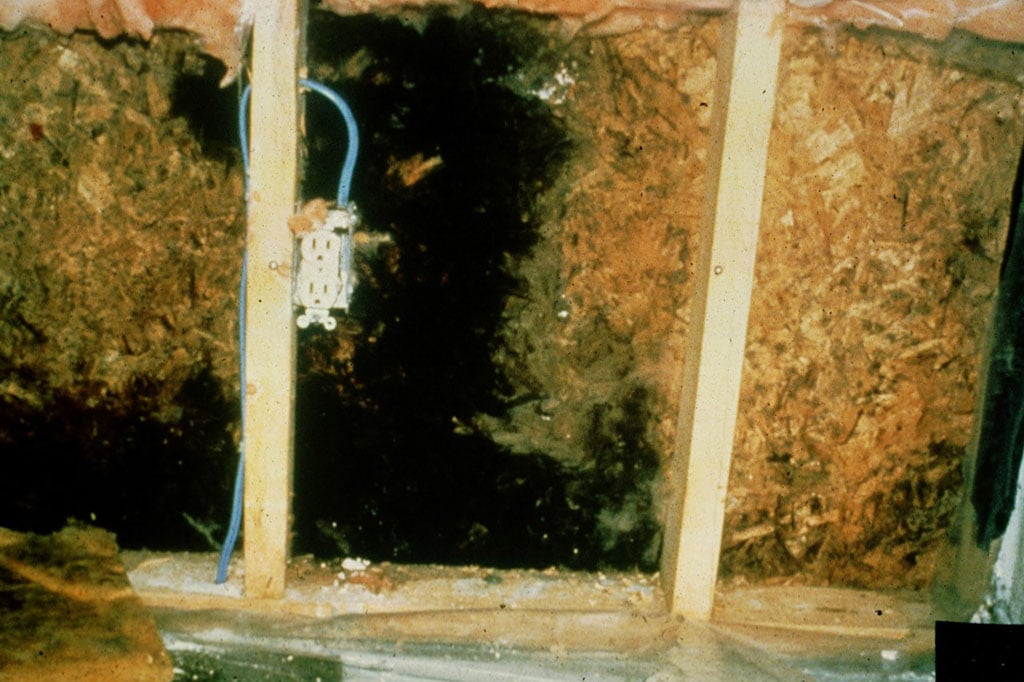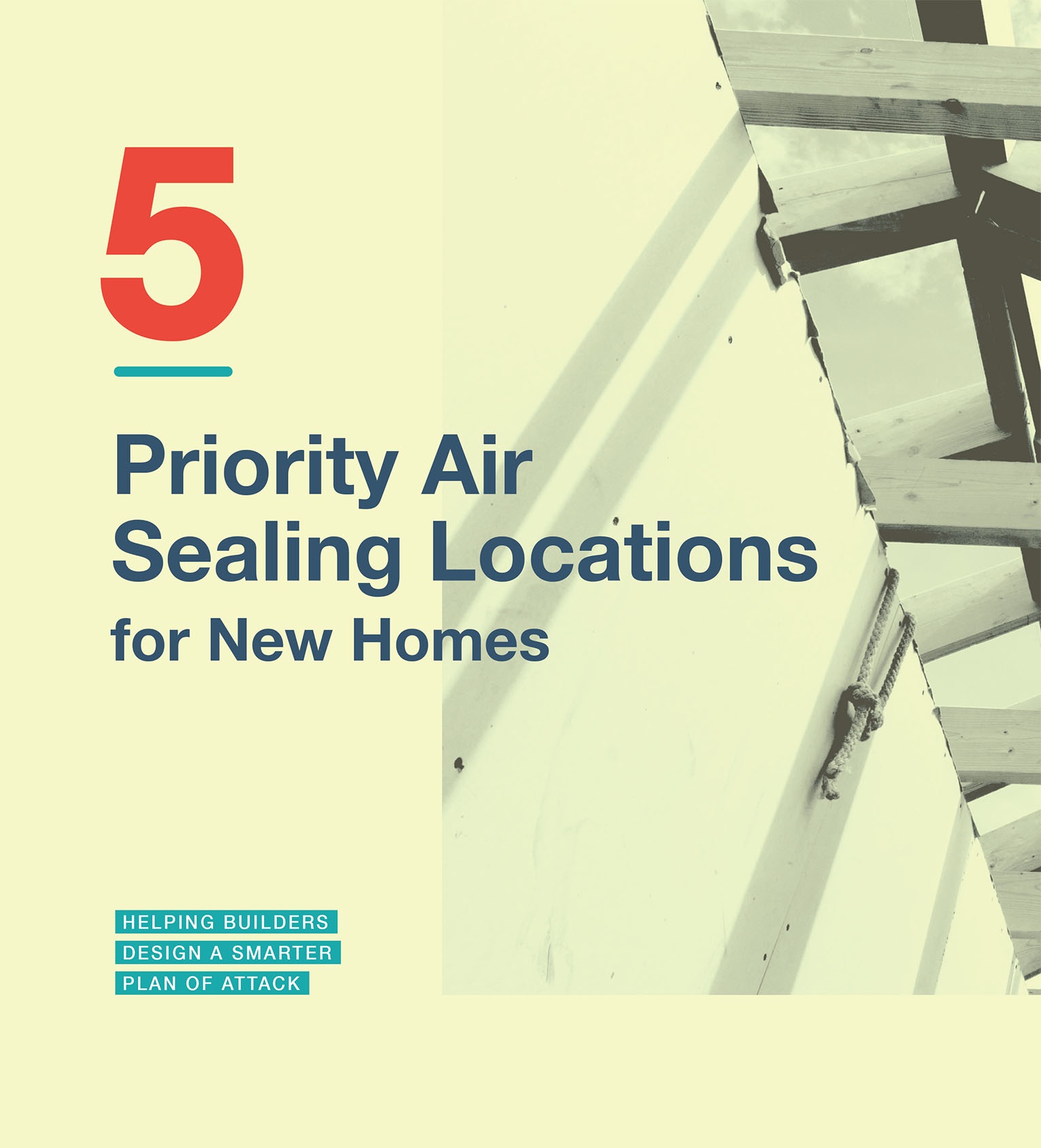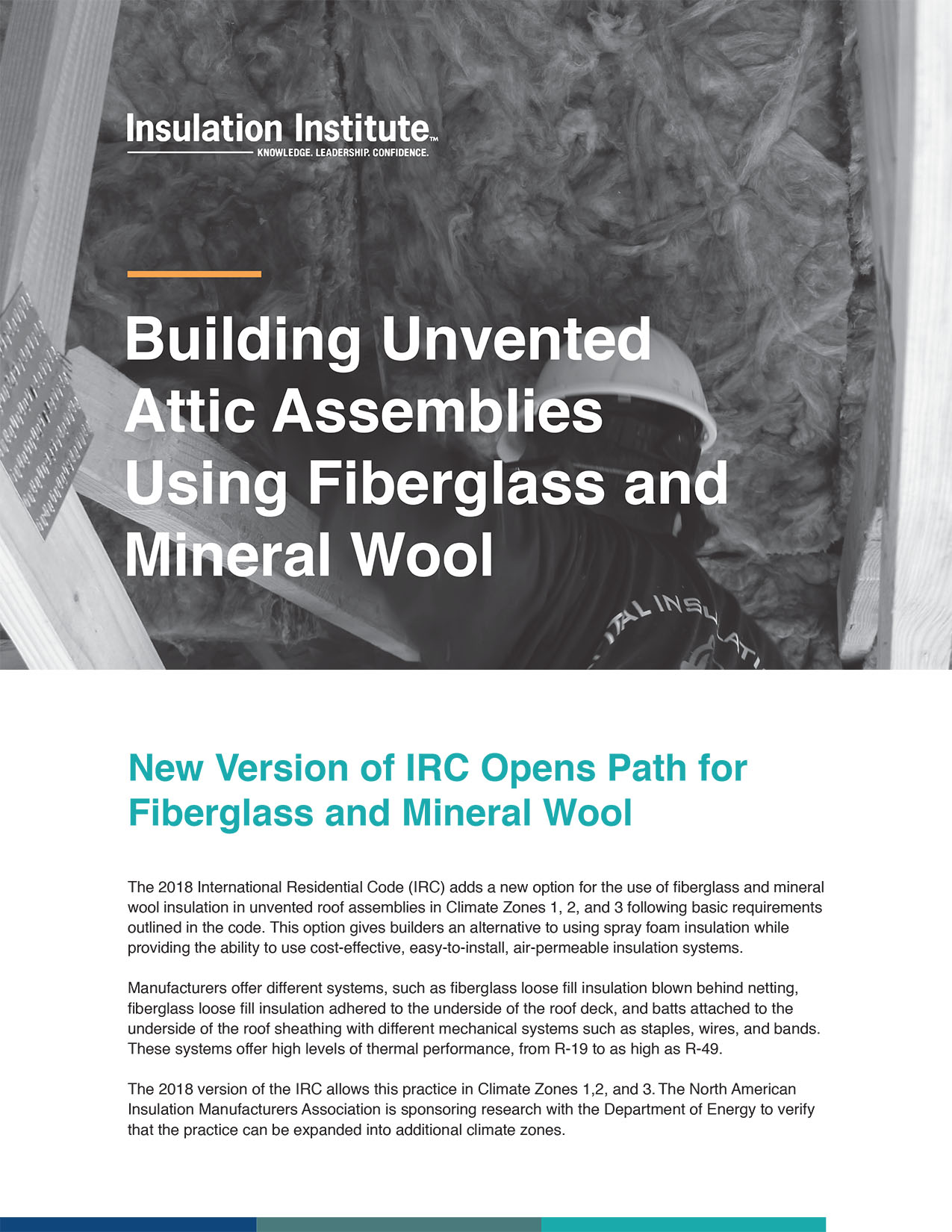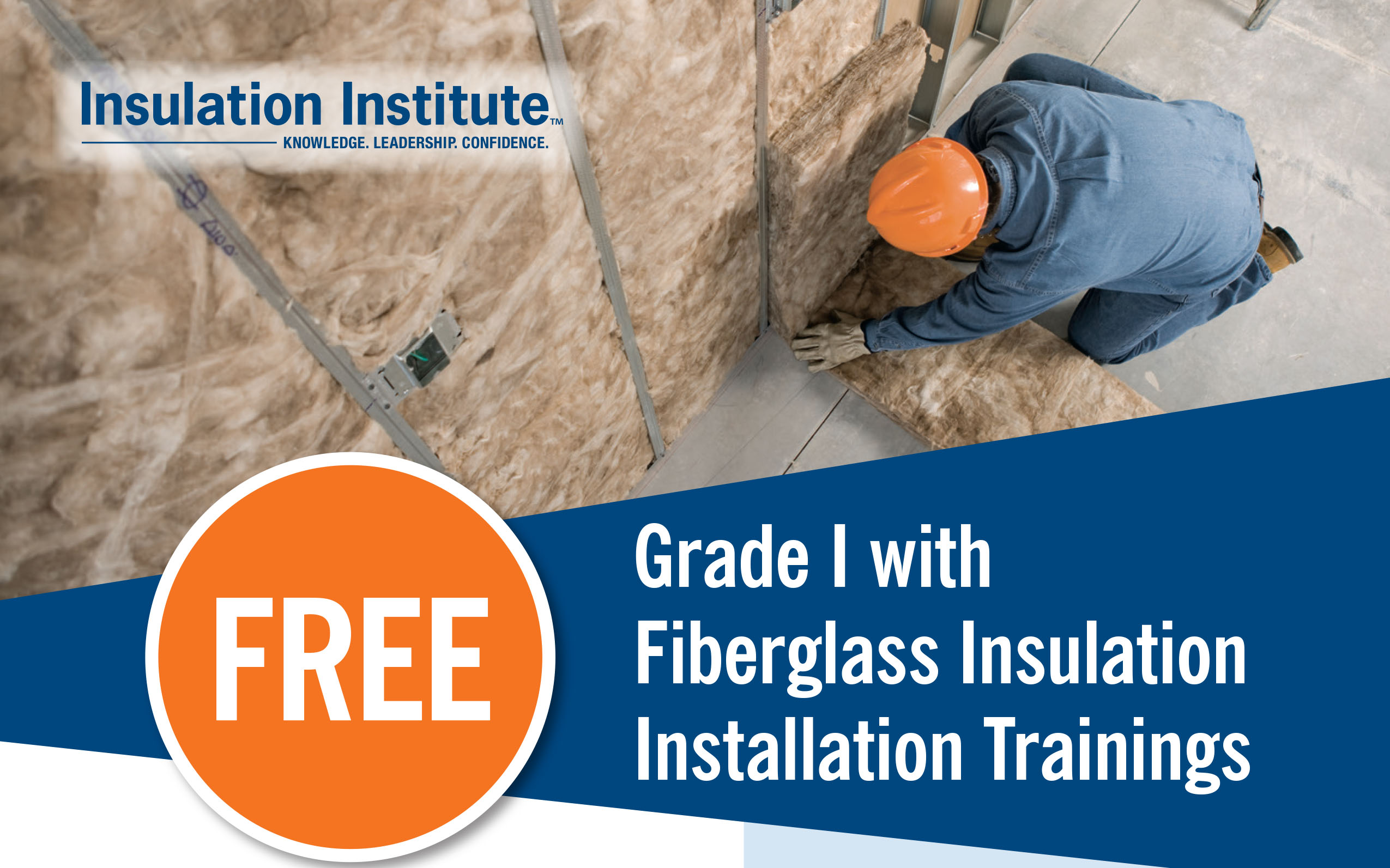With the newer version of the International Energy Conservation Code (IECC) coming to states throughout the country, builders may have to make swift changes in practices to meet new, more stringent home energy efficiency requirements. For example, the state of Pennsylvania recently updated from the 2009 IECC to the 2015 version, which improves the energy efficiency of a home by 25 percent. The code also comes with a new air tightness requirement of 5 ACH50, which now needs to be verified by a blower door test. That’s proven to be an obstacle for some builders, particularly in states where testing was not previously required. Contractors know that energy efficiency starts with framing, but what specific framing practices can help increase home energy efficiency? Norbord’s Doug McNeill talks about how builders can implement small changes in framing to get big changes in home energy efficiency — without substantially increasing costs.
Details »Insulation Institute Blog
Posts By: Stacy Fitzgerald-Redd
5 Priority Air Sealing Locations for New Homes
Achieving an energy efficient, durable and comfortable home starts with framing and includes air sealing and insulation. Regardless of the type of insulation used, whole-home air sealing is a must to minimize air leakage and maximize thermal performance. It’s also an essential part of meeting new home airtightness requirements. As states adopt new, more stringent home energy efficiency codes, builders must redouble their efforts to ensure that new homes are properly air sealed. But where are the areas within the building that are leakier than others?
Details »Unvented Attic with Fiberglass and Mineral Wool
Building Unvented Attic Assemblies with Fiberglass and Mineral Wool
The 2018 International Residential Code (IRC) allows air-permeable fiberglass and mineral wool insulation in unvented attics in Climate Zones 1, 2, and 3. Our new guide details how to do this.
Prior to the completion of research and publication of the 2018 IRC, concerns about condensation in warm, humid climates prevented the practice. However, research studies have shown that fiberglass and mineral wool can be used safely in these locations.
Details »Blow the Insulation, Not the Budget
Maximizing cost effectiveness is every builder’s goal and every home buyer’s expectation. Each year, an impressive group of builders is recognized by the U.S. Department of Energy (DOE) for their forward-thinking approaches to delivering Zero Energy Ready homes. The most exemplary of the annual winners achieve this extraordinary target while keeping costs in line. Utah-based Garbett Construction is a 2017 Housing Innovation Award winner, and its winning Elizabeth model delivers notably affordable high energy performance, using proven energy-efficient construction practices and economical blown-in fiberglass insulation.
Details »Two Air Leakage Items Blindsiding Builders
Home Energy Rating Systems (HERS) Raters can play a central role in helping builders transition to new more stringent residential building energy code requirements, like the 2012 or 2015 International Energy Conservation Code (IECC). As more states adopt newer versions of the code, HERS Raters are providing key guidance to builders that are tasked to deliver increasingly tight homes. That guidance includes essential training in how to reduce building air leakage. James Rodriguez of Fox Energy Specialists talks about the two things that may blindside builders when they must meet new code requirements and what builders must do to prepare for compliance.
Details »Four Tips to Own Digital Marketing
M/I Homes is the thirteenth-largest builder in the nation and a leader in the home building industry. As a mid-level production builder with a superior quality reputation, the company unabashedly embraces digital marketing to relate to and attract new buyers. The ability to deliver fresh, appealing and visual content to draw customers is an art perfected by Marketing Manager Web Platforms Will Duderstadt, who guides the company’s Internet marketing, online content and lead generation activities. Duderstadt is also a sought-after speaker, brand strategist and digital influencer. Even with that full plate of responsibilities, he took the time to speak recently with Insulation Institute to offer guidance on four things builders can do better to connect with buyers they hope to attract.
Details »Free Grade I Training Coming to Four States
According to U.S. Department of Energy 20 percent home’s energy is wasted because the home is under insulated and improperly air sealed.[1] For builders, this can wreak havoc on productivity, resulting in call backs, jeopardizing code compliance, reducing HERS scores, and resulting in homes that are less energy efficient and comfortable for consumers.
Details »The Rising Appeal of Factory-Built Homes
Builders today face a number of challenges in the face of a national shortage of available and affordable housing. At the top of the list is a deficit of skilled labor, a lack of construction knowledge by consumers and real estate agents, and a declining number of experienced and qualified general contractors for both onsite and modular home construction.
Factory-built home construction advocates argue that their construction process can tackle many of these issues. To get a clearer picture, Insulation Institute spoke with Ed Hudson, Director of Marketing Research Services at Home Innovation Research Labs, and Jay Young, Marketing and Licensing Agent for William Poole Designs about the current housing situation and the future of home construction in America.
Details »RESNET Unveils Water Efficiency Measure
Home buyers and owners aren’t just concerned about energy efficiency, they’re increasingly interested in the water efficiency of homes as well, due in part to double-digit increases in water costs over the past few years in many areas of the country. Growing interest in water efficiency has prompted Residential Energy Services Network (RESNET) to partner with the International Code Council to develop a national consensus standard for home water efficiency dubbed HERSH20. The standard will define how to calculate a rating index for home water efficiency.
Details »4 Steps to Prevent Excess Moisture in New Homes
Building Scientist Joe Lstiburek talks about the four things builders can do to prevent excess moisture during construction.
 One essential element to securing the long-term durability of any home is moisture control. In fact, much of what we know about applied building science today was the result of early work investigating the moisture impact on buildings. Joe Lstiburek Ph.D., founding principal of Building Science Corporation, recently spoke with Insulation Institute about the four things home builders can do to prevent excess moisture during new home construction.
One essential element to securing the long-term durability of any home is moisture control. In fact, much of what we know about applied building science today was the result of early work investigating the moisture impact on buildings. Joe Lstiburek Ph.D., founding principal of Building Science Corporation, recently spoke with Insulation Institute about the four things home builders can do to prevent excess moisture during new home construction.









